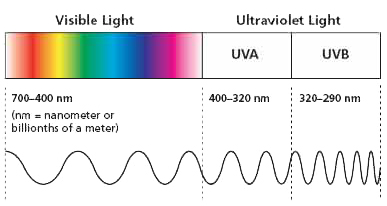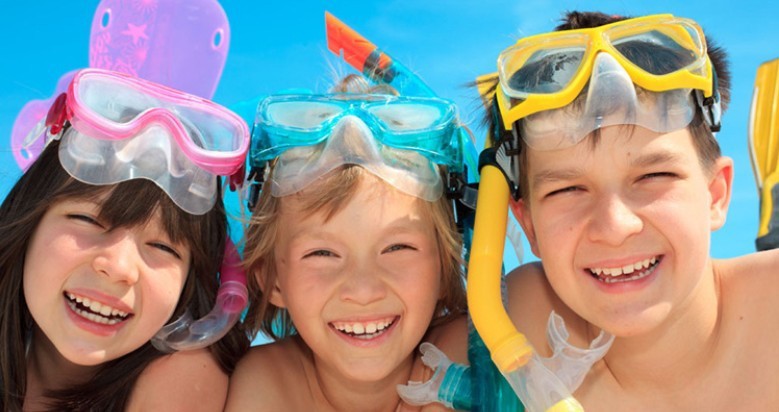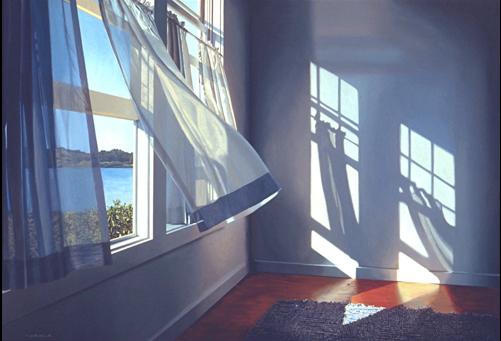HAZ CLICK AQUÍ PARA VER EN ESPAÑOL
There are plenty of curious scientific facts outside in the middle of the summer when it’s warm and sunny. We are so surrounded of so much science you look at without giving it a think.
How does sunscreen work?
In every sunscreen bottle you will find the acronym SPF followed by a number.
SPF stands for Sun Protection Factor and indicates how long it will take for UVB rays to redden skin when using a sunscreen, compared to how long skin would take to redden without the product.
For example, an SPF of 15 would allow you to stay in the sun 15 times longer than you could without protection. So, if your skin starts to redden in 20 minutes without sun block, applying a product with SPF 15 increases that time by a factor of 15, meaning you could stay in the sun for 300 minutes.
Sunscreen has inorganic and organic compounds
Organic chemicals, with names such as avobenzone or oxybenzone that absorb UVB radiation. As the compounds absorb UV radiation they slowly break down and release heat.
Some inorganic chemicals, like minerals such as zinc oxide or titanium dioxide, that block UVA radiation. They reflect UV rays, similar to how white paint reflects light. These are always found in sunscreens around Australia right under the ozone hole.
To make sure you’re getting effective UVA as well as UVB protection, look for a sunscreen with a high SPF plus some combination of UVA-screening ingredients.

Blurry vision under water
You can see clearly underwater if you are wearing goggles or a mask, but if you don’t everything is blurred. Why is that?
The reason why you see this effect is the same reason a spoon looks bent when you immerse it in a glass of water.
Lights bends when moving from one medium to another and this is because it changes speed. Light travels more slowly through water than it does through air and as result the beam is bent, or refracted.
The amount of bending depends on the ratio of the speed of light through each medium. (Light is fastest in vacuum, then air, water… and way slower trough translucent mediums)
The human eye is balanced to make sure that light coming through the pupil is focused on to the retina at the back of the eye. And it’s optimized for light coming from air when hitting the surface of the eye.
The eye has evolved to take account of the refraction that takes place at the interface between air and eye, and gives a focused image onto the retina.
However, when light comes directly from water to the eye, the light is bent by a different amount, so the light isn’t correctly focused.
Goggles restore the air/eye interface and normal sight is resumed.

The fastest way to cool down your car
The summer sun has a way of transforming cars into ovens, and it’s no fun sweating while you wait for the air conditioner to provide some relief. You can speed things up with a bizarre yet apparently effective little trick.
Roll down a window on a side of the car. Let’s go with he window that is behind the passenger’s side. Then go to the driver’s site and open and close the door for a minute. This will cool down your car by 5ºC
What we’re doing here is to help circulate air by drawing the hot air out from the opening/closing door, and causing the cooler air to enter the car through the open window.
Safety advice! This is a great trick when your car is parked. Never try it while the car is moving!!!!
Keep your house cool
It’s very hot and we wonder whether it’s better to open the windows at home or keep them shut.
The idea is to keep the windows (and specially the blinds in order to avoid direct sunlight) closed when it’s hotter outside than inside, but open them if the room gets too hot.
Why do we feel relief when we open the window no matter the temperature? Because sometimes, even when is hotter outside when you open the window a small air current will be created letting you feel a cooler thermic sensation.
But that’s only temporary. Once the temperature equals both sides of the window that breeze will stop and your house will be hotter.
So my advice is to open the windows at night when the air is cooler and of course, taking a siesta in the afternoon, when the day is hottest and when it is almost impossible to work anyway, that will give you the energy to stay up at night, when it’s cooler.







